Resilience Plasticity
//Abstract
Climate change effects, increasing population, and staggering waste in the built environment are some of the main issues cities around the world have to collectively approach. The capacity to overcome these conditions, and be able to return to a previous standard, the city’s resilience. But is resilience enough to be sustainable? If not, How can we re-evaluate the keyword, from meaning a state of stability and consistency to one of adaptability and evolution? To bounce forward and not back.
Changing the narrative from resilience to plasticity, a solution has the potential to adapt when facing new challenges and circumstances.
//Key Argument
Within sustainable architecture, Resilience needs to be replaced by a notion of Plasticity.
//Context
External and internal stresses, like climate change and population increase, are addressed with resilient strategies in urban design and architecture.



In order to manage these issues, cities have developed the ability to manage the incoming pressures and maintain their balance. This capacity to survive and be able to return to a previous standard is known today as a city’s resilience.


Various definitions of resilience.

//Key Question
Meaning of resilience through time.


The emphasis of resilience on ‘bouncing back’ to original state aftershocks is totalitarian and cannot be used as an absolute concept.
- Is resilience the right keyword to face the issues of climate change?
- Is resilience enough to be sustainable?
- How can we re-evaluate the ideology of designing for stability?
//Hypothesis

Plasticity is a better alternative to the notion of resilience while addressing issues of sustainability and climate change.

Meaning of plasticity through time.

Plasticity is capable of giving and receiving shape. Instrumentalizing the word plasticity owing to the aim is to move past the original, not return to it.

//Methodology
Phenotypic plasticity refers to some of the changes in an organism in response to its environment.

In architectural terms, the essence of the built environment remains the same, although the architecture that occupies the environment adapts based on context. A project can change and adapt according to the four natures: morphological (shape), physiological (function), behavioral, and phenological (biological cycles).
Theories, government policies, and architectural and urban design projects were considered as case studies to derive an alternate perspective of plasticity on projects that operated under resilient architecture strategies.

//Case Studies
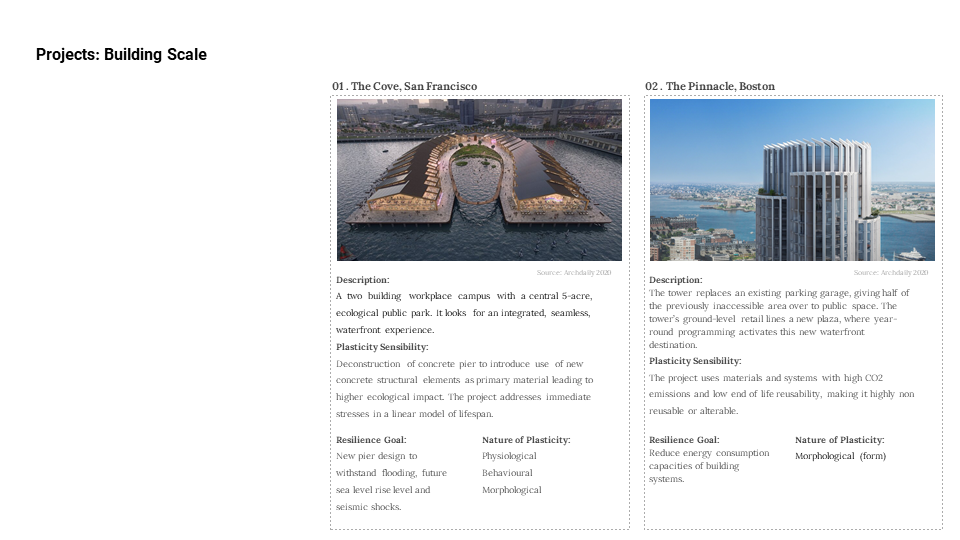
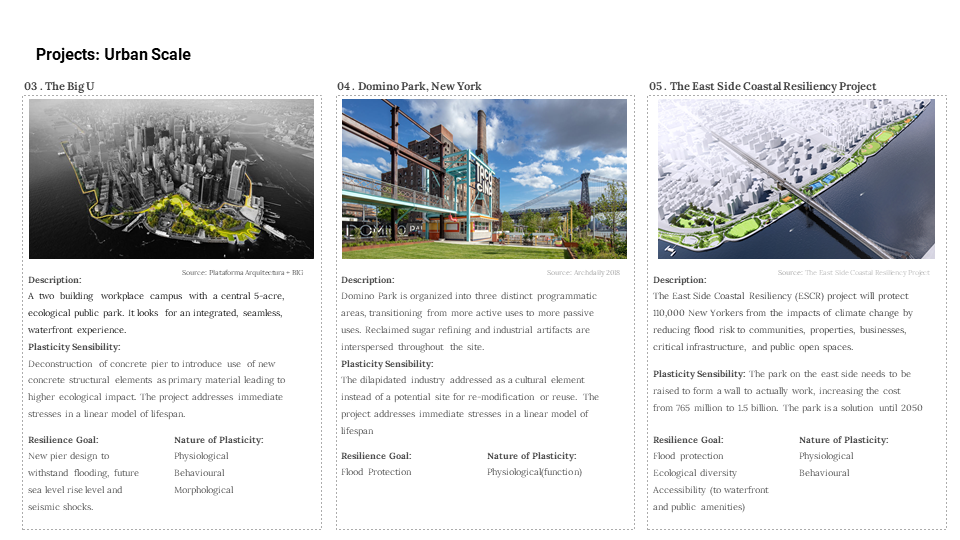
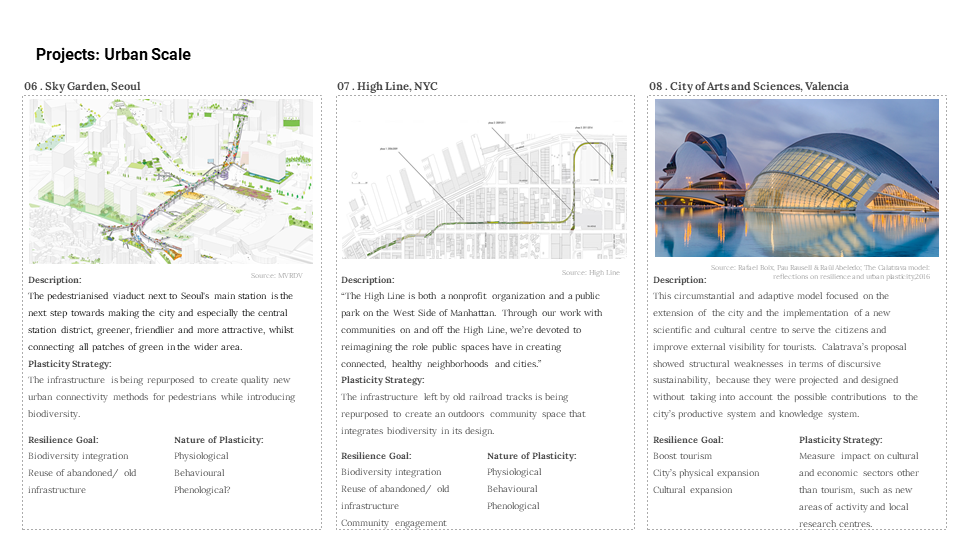
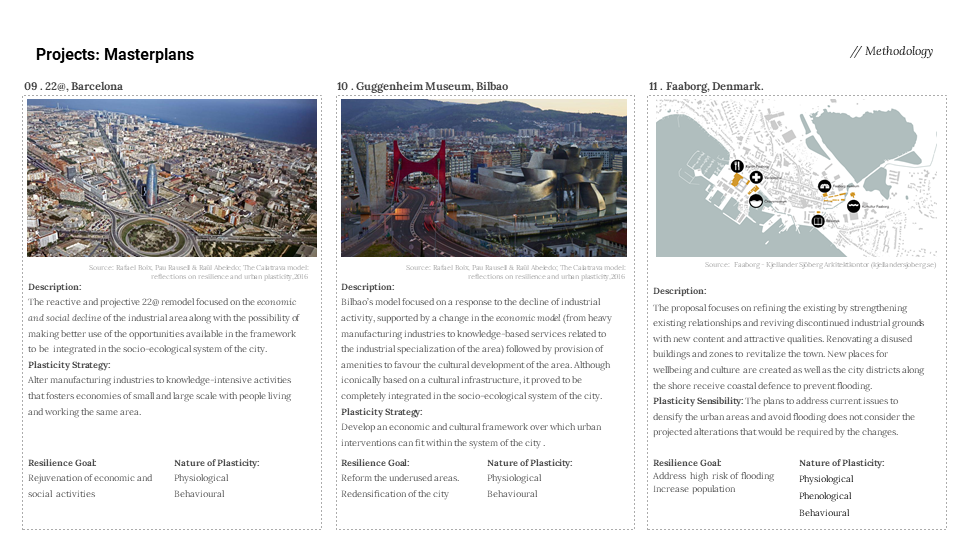
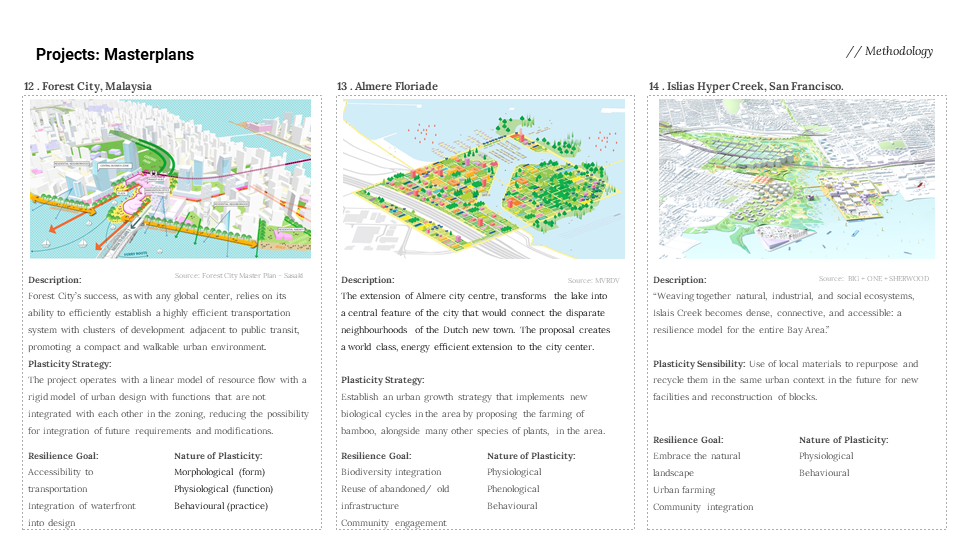
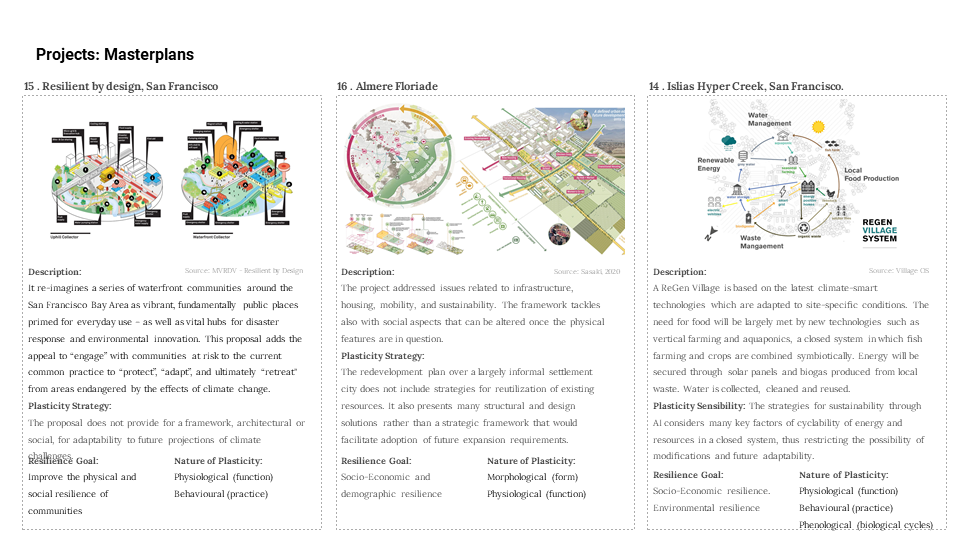
//Resilient by Nature (Resilience strategy)



//Village OS (Plasticitiy strategy)


//Conclusions
The case studies highlight a few key recurrent trends across the projects that operate under the existing notion of resilient architecture. The solutions presented from these projects are absolute (static or rigid.), which are based largely on the historical and current context, practices, and tendencies. These result in cost soaring over budget, low possibility of adaptation to changing future conditions, the unpredictability of performance over its lifespan with a linear consumption of resources.
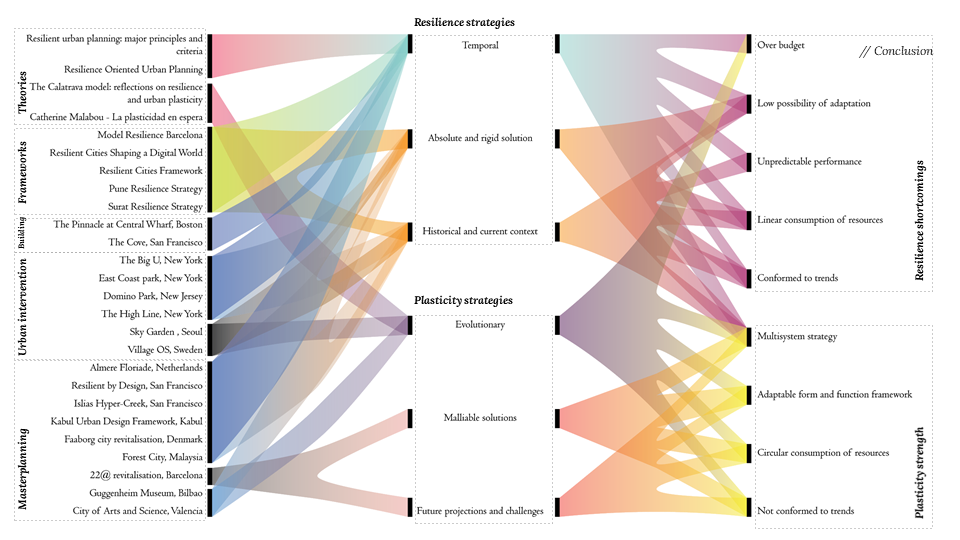
The shift from resilient sensibilities to one of the plasticities would entail perceiving architectural and urban solutions as frameworks that can be molded ( re-adapted, repurposed, and reused.)


An evolutionary framework, that adapts to changing system dynamics, would result in resource-efficient solutions which in turn would yield sustainable solutions.
//Reflections
When something adapts, it allows for part of the existing to remain. Does this result in conservative strategies?
Can radical change happen through adaptability without destruction?

-Resilience-Plasticity is a project of IAAC, Institute for Advanced Architecture of Catalonia developed in the Master in Advanced Architecture 2019/21 by:
Students: Lilett Ricaurte and Nihar Mehta
Faculty: Jordi Vivaldi & Manuel Gausa